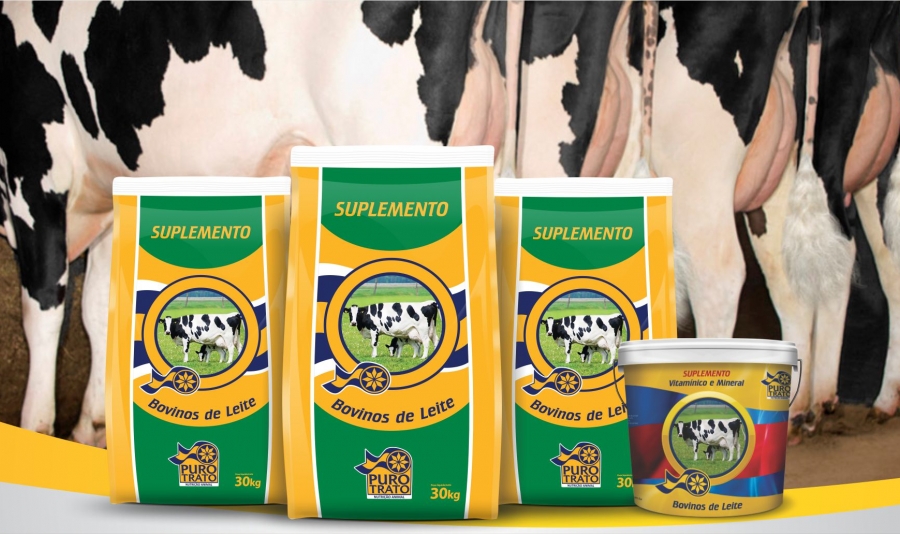
Source: Embrapa
Producer already knows, but it is always good to remember that the correct mineralization of the herd guarantees a good production of meat and milk and avoids a fall in productivity. As pastures do not supply all the mineral needs of the animals it is important to do the correct supplementation using a mixture with all the macro and micro elements in the concentrate.
The most important macrominerals are: Calcium (Ca), Phosphorus (P), Magnesium (Mg), Sulfur (S), Sodium (Na), Chlorine (Cl) and Potassium (K) and Microminerals: Iron (Fe), Zinc (Zn), Copper (Cu), Iodine (I), Manganese (Mn), Fluorine (F), Molybdenum (Mo), Cobalt (Co), Selenium (Se), Chromium (Cr), Nickel (V) and Silicon (Si). Usually these elements are part of the commercially available mineral mix, but it is important to buy the product from reputable companies and, if in doubt, collect the product sample and send it for analysis.
The mineral salt needs vary according to the state of the animal and the weight. In general it can be said that the daily consumption should be between 80 and 100 grams. It is good to remember that without proper mineralization the animal will not develop its full potential, so it is advisable to evaluate a specialist to indicate the best mix for the herd.
There are many myths around the subject that are worth commenting on, for example, that mineral salt is all the same. For the researcher of Embrapa Sérgio Raposo what differentiates one mineral salt from another is the formulation. \"A poorly formulated product, that is, with poor warranty levels and poorly planned consumption, will not be effective.\" Another issue, which is even more troubling, is that there are numerous pitfalls in the market in terms of raw materials, says the researcher. \"Although some of them can be avoided with a laboratory analysis, others may have a perfect report, but the nutrient can not be assimilated.\" Other differences, according to Sérgio, are: quality of the mix, nobler sources of raw material, type of presentation (granulated, flocculated), resistance to the pit and something that has made a lot of difference: technical support from the company to the producer.
Another common thread is that the mineral that matters in salt is phosphorus. According to the researcher, phosphorus is not the only mineral that the producer should worry about. Surveys by Embrapa Cattle show that forages have a low sodium value (<0.1% of dry matter), predisposing to deficiency. Phosphorus ranked fourth in the survey, with 72% of the samples below 0.12% of dry matter, in addition to others. Since everyone can limit production, the breeder must be concerned with various minerals in addition to being balanced, without too much excess that might predispose to absorption problems. \"An excess mineral impairs the absorption of another,\" says the expert.
It is also common to hear that it is foolish to spend on mineral salt and that some friend stopped mineralizing and noticed no difference whatsoever. Sérgio says that this is a myth for which time suffices to overthrow. The use of the mineral supplementation technique allows the use of all the productive potential of the forage, says Sérgio and \"having this correct concept at the tip of the tongue helps to leave salt at the tip of the tongue of the animals and the blue more alive in the account of the farm\" .
The use of minerals in drought
The logic is that the requirement of the minerals to maintain or lose weight in the drought is so low that the little that has in the pasture already solves. The important concept is this: The greater the production, the greater the need for nutrients, including minerals. That\'s why the time to worry about mineral supplementation is in the waters. In drought, we should also, but using salt with urea and protein, solving first the most limiting factor, explains Sérgio Raposo. \"What happens in the drought is that it is not enough to provide only the minerals, because the most limiting nutrient is protein.\"
Tips and care with the troughs
One tip is to use a good mineral salt. If the breeder prefers to mix the salt in the own farm, it is advisable to consult a technician to do the balance of the mixture that must be according to the nutritional requirements of the animals. Another tip is with regard to the troughs where the mineral salt is placed. Ideally, they should be covered, well located, and not entangled by accumulation of water. However, the worst case scenario is not having the mineral salt wetted by rain, but the lack of minimal linear trough space. It is best to offer at least six linear centimeters of trough for each animal unit served by this trough - teaches Sérgio. Between having salt preserved from the rain and giving salt access to all animals, even if wet, the producer should give preference to the second option, recommends the researcher. \"However, when using uncovered troughs, it is advisable to have a more intensive monitoring and supply, since the humidity helps to salt the salt, which impairs its consumption.\"
Puro Trato offers a complete line of mineral supplements for horses, beef cattle, dairy cattle and sheep with high bioavailability, specially formulated to meet the different stages of breeding, improving animal productivity.
Mineral supplementation has a highly positive cost / benefit ratio; Therefore, investing in the correct mineralization through the Puro Trato line of supplements is to be sure to create healthy and productive animals, ensuring greater profitability.
 J A Teixeira Veterinária Ltda. Headquarters: Angelo Santi Avenue, 1615. Santo Augusto, RS, Brazil. Phone: +55 (55) 3781-3467 / 3781-3476
J A Teixeira Veterinária Ltda. Headquarters: Angelo Santi Avenue, 1615. Santo Augusto, RS, Brazil. Phone: +55 (55) 3781-3467 / 3781-3476 
